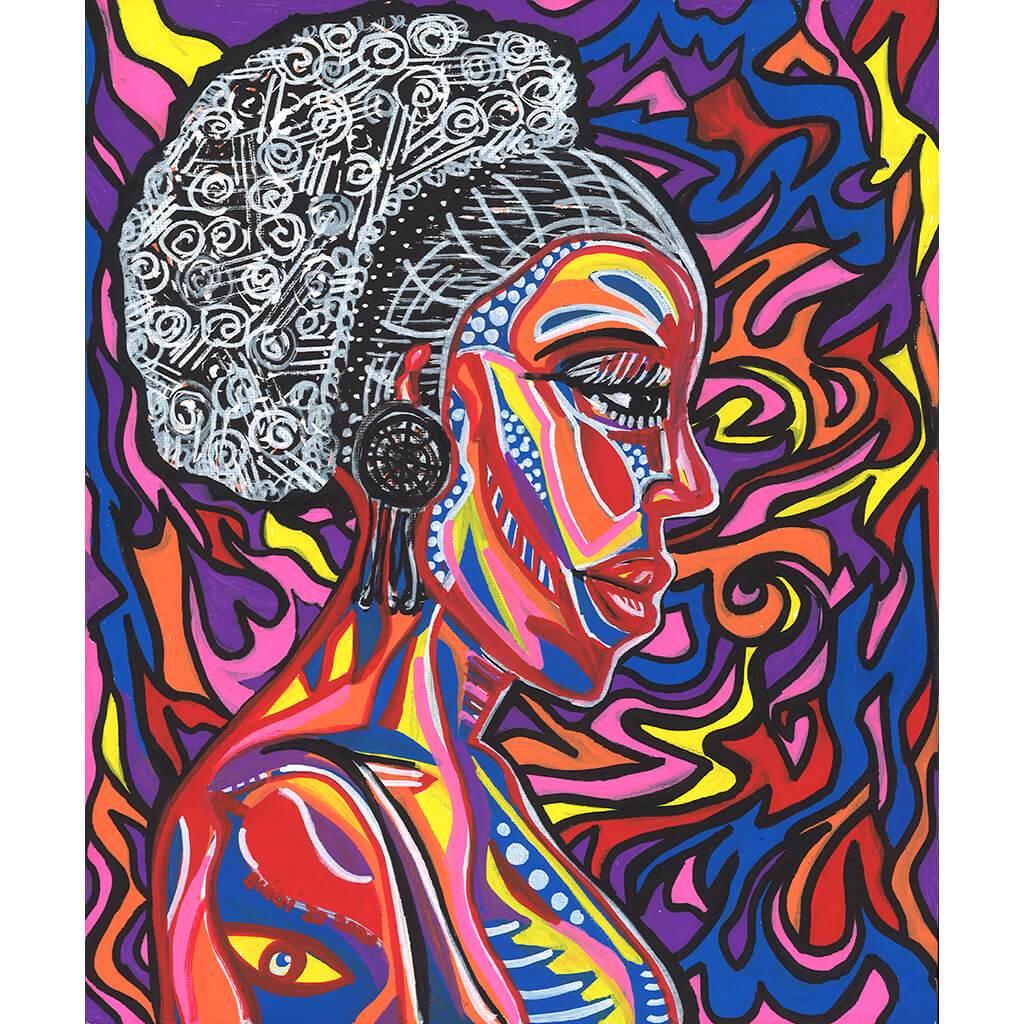In portraiture the story most often told in Britain is that of "the great white male", according to Stella Duffy in 'Portraiture: The Problem and the Solution', 2017. She says, "What matters is that we notice the women who are not part of the story, the people of colour who are not on the walls,"
In the month we celebrate cultural diversity, Art & Soul blogger Stella Tooth takes a look at cultural diversity in British portraiture.
With an Italian mother and English-born father of Scottish heritage, I appreciate that the world is filled with people with different beliefs, religions, traditions, sexual orientations and ways of living.
It's though our differences we find beauty
Cultural diversity benefits everyone. It is through our differences that we can find beauty. And portrait art is one way that we can express, share and celebrate our differences.
In a former career, as a print journalist, my first job was as a reporter on the now defunct 'Kensington News and Post'. One of the news highlights of the year was reporting on the Notting Hill Carnival.
The Notting Hill Carnival - now Europe's biggest street festival - has its origins in the carnival traditions of the Caribbean, and the social and political conditions of the post-1948 migration of people from there. By the 1950s, Notting Hill and Brixton had the largest population of Caribbean people in Britain.
Notting Hill Carnival: celebrating the UK Caribbean community
It’s a huge, free street festival celebrating the Caribbean community with reggae and calypso music, street food, like jerk chicken, and a spectacular costume parade.
So, imagine my delight when, years later as an artist, I spotted a carnival float parked up in my home borough of Ealing with speakers belting out calypso - and whistles! Before the revellers set off, I asked to take some reference shots of one of the performers that caught my eye, from which I painted this image in oils.

Oil on canvas
84x74x6cm
For collection from Ealing London studio
£510
Cultural appreciation
My mum - a proud Napoletan, who came to love the British culture in which she lived the majority of her life - said she also felt herself to be "a citizen of the world". I draw and paint from this viewpoint - of appreciating the differences of other cultures - when I portray some of the amazing people I have met on my extensive travels, or take inspiration from beautiful photographs provided by my photographer friend Jeff Overs, as in the two portraits below.
Pen pals - an exchange of culture
Back in the days when we all had school pen pals, I used to write regularly to a Kenyan boy, and two girls from Japan and Canada. We sent each other little gifts that reflected our respective cultures. The Japanese girl - who comes from a culture where life is art - sent me Kokeshi dolls, hand-made wooden toys with no arms or legs but a simple trunk and head with a few painted lines for the facial features. Each had its own exquisite silk kimono. The box they came in was a work of art in itself in which all the dolls fitted perfectly within a bed of tissue paper, and handwritten tags bore each of their names. The Canadian sent me 'Beautiful British Columbia Magazine', through which I learned about the flora and fauna around Vancouver, where she lived. And, in return, I sent them collections of postcards featuring Bournemouth beach, London buses, Stonehenge - and The Queen!
The Kenyan sent me delicate bead bracelets, with hooks and eyes made from beads, created by the Maasai people. The necklaces worn by the Maasai are created as a social duty by women. They're not just decorative but a vital aspect of Maasai culture. Jewellery is worn to show age and social status, and to mark major events. And each colour has a specific meaning, usually associated with cattle. Red, for instance, represents bravery and strength, but also the blood of the cattle slaughtered for food and during celebrations.
It was a labour of love recreating those beads in my picture - a labour which took me four studio days, yet I'm sure that was a fraction of the time it must have taken the necklace creator.
A Maasai woman by Stella Tooth
Seeing life through others' eyes
The Hod Carrier below comes from the monumental mud-brick city of Djenné in Mali. As Mali is land-locked, and I grew up at the seaside, his boat-shaped basket made me wonder what that must be like? Did he ever dream of travelling to see the Red Sea one day - something I suggest in the background.
The Hod Carrier, Mali by Stella Tooth
At a time when London's museums and galleries are striving to be more representative and inclusive spaces, including more diverse faces and identities on their walls, perhaps the real change will come as, over time, the professional staff themselves become more diverse and their choices are reflected in the art on show and in its creators.
Skylark Galleries' figurative art











